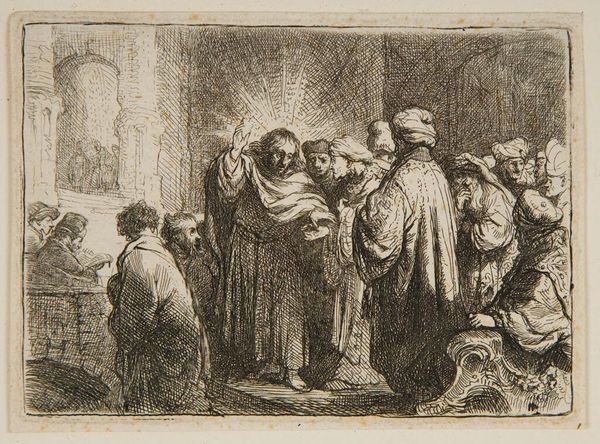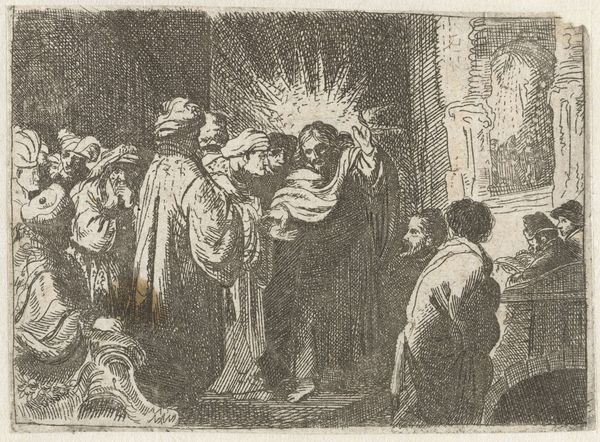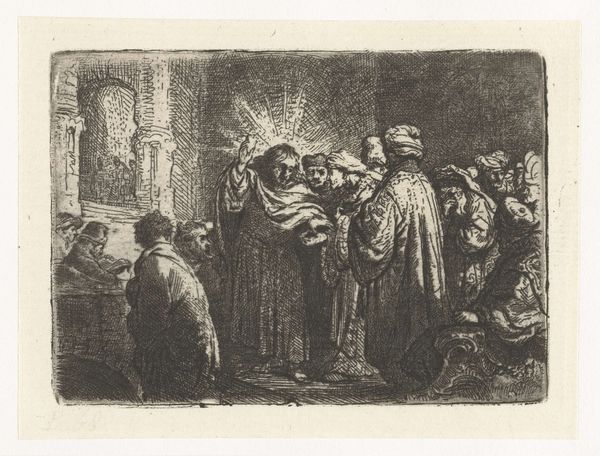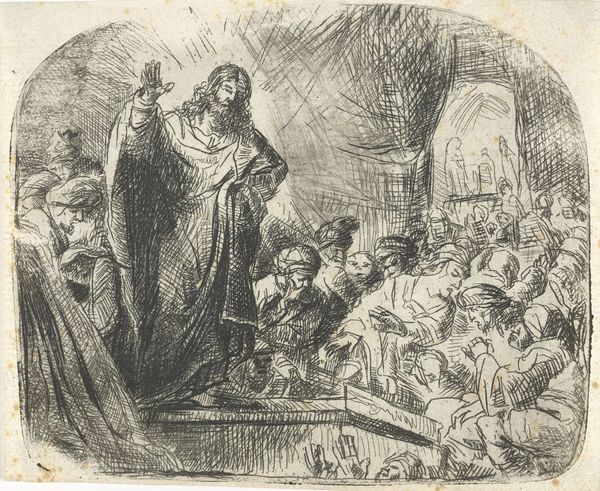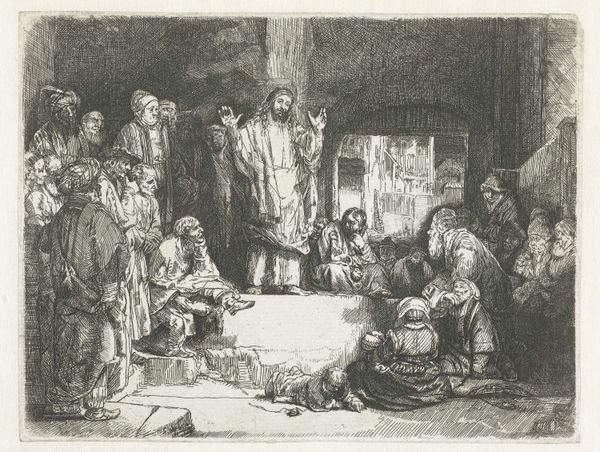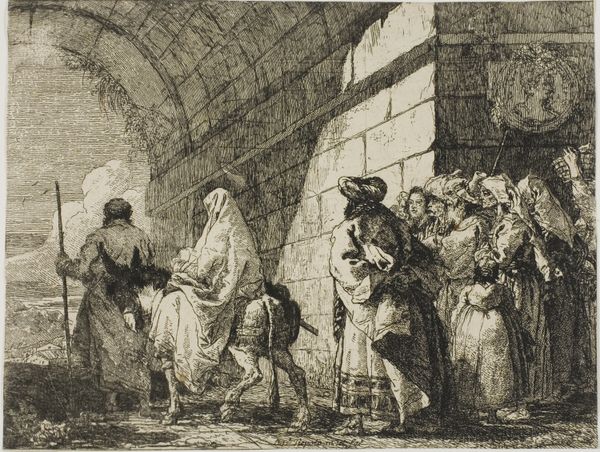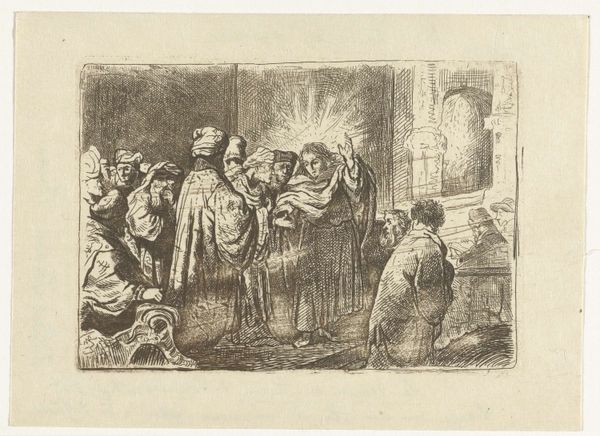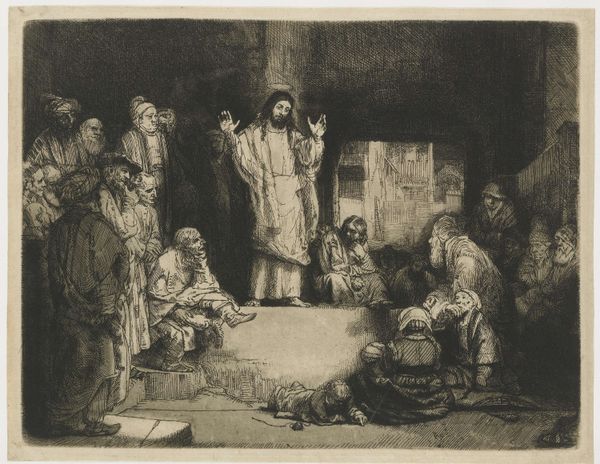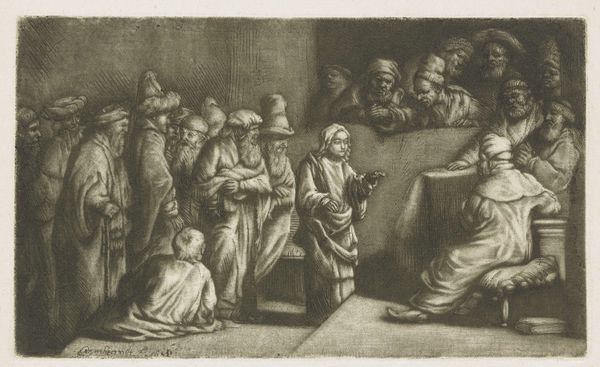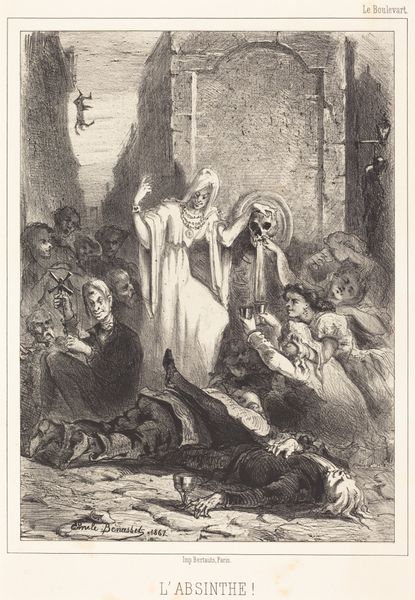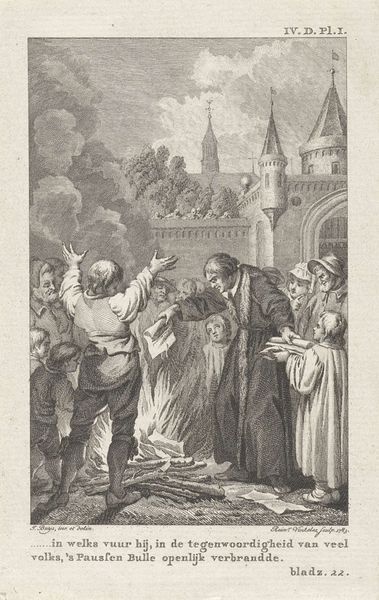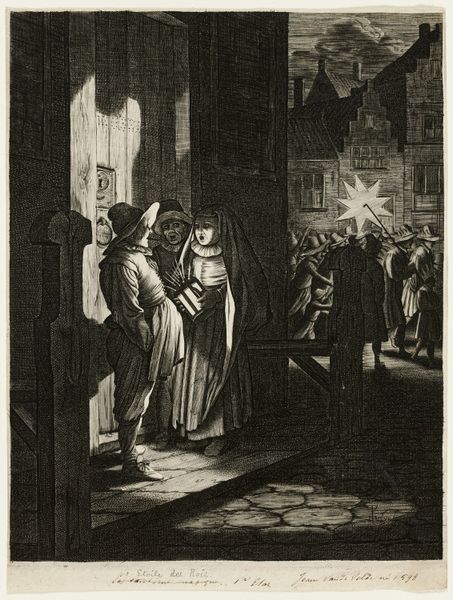
drawing, etching
#
drawing
#
narrative-art
#
baroque
#
etching
#
figuration
#
history-painting
Copyright: Public Domain: Artvee
"The Tribute Money" was etched by Rembrandt van Rijn in the Dutch Republic, sometime in the mid-17th century. It’s a depiction of a biblical scene that would have been familiar to Rembrandt’s Protestant audience. Christ is questioned about the lawfulness of paying taxes to Caesar, and he responds by asking whose image is on the coin. “Render therefore unto Caesar the things which are Caesar’s; and unto God the things that are God’s.” But Rembrandt’s etching presents this story in the context of the 17th century Dutch Republic, which was an increasingly secular society with a complex relationship to religion and government. The Dutch Revolt against the Spanish Empire saw the creation of new institutions that struggled to define the relationship between church and state. In this print, Rembrandt gives us an image that prompts us to reflect on that tension. Understanding this image requires understanding the fraught social and political environment in which it was made, and for that, historical records are invaluable.
Comments
rijksmuseum about 2 years ago
⋮
The Pharisees wanted to know from Christ whether Jewish law allowed taxes to be paid to the emperor. He saw through the trick question and asked who was depicted on a Roman coin: the emperor. Whereupon he said: ‘render unto Caesar the things that are Caesar’s, and unto God the things that are God’s’. Rembrandt hints here that the men have dubious intentions.
Join the conversation
Join millions of artists and users on Artera today and experience the ultimate creative platform.
